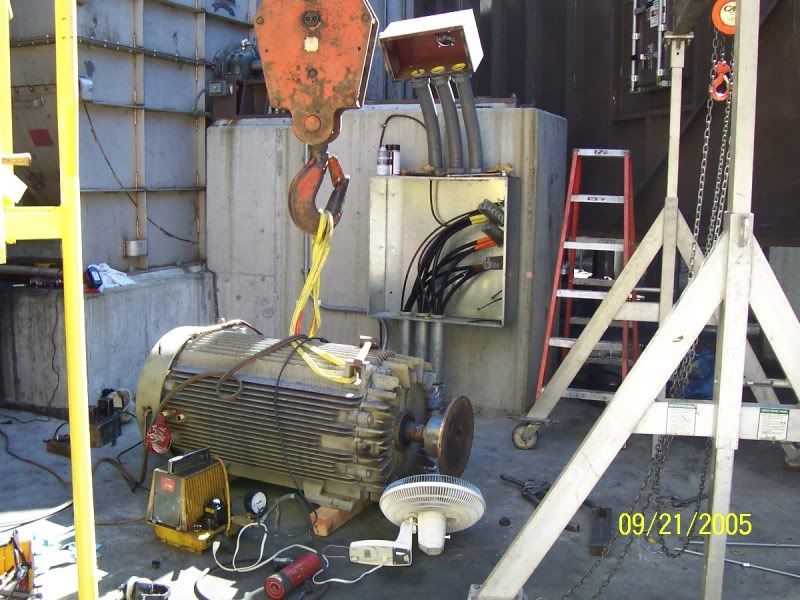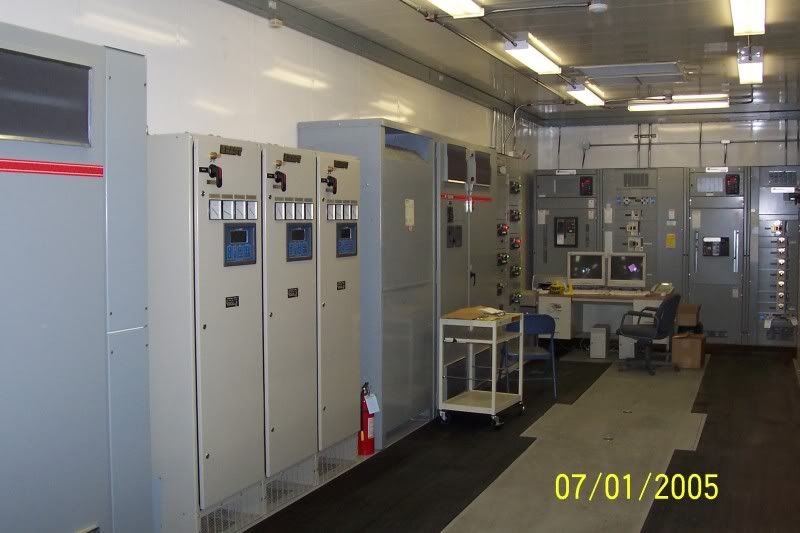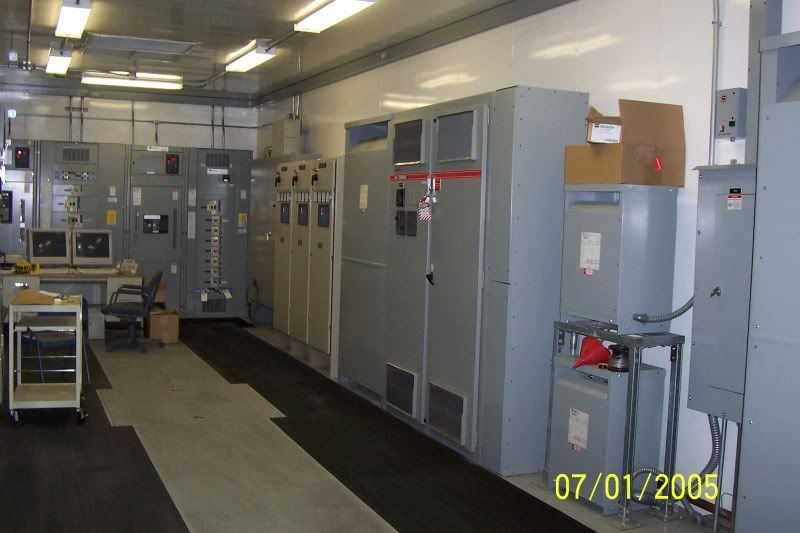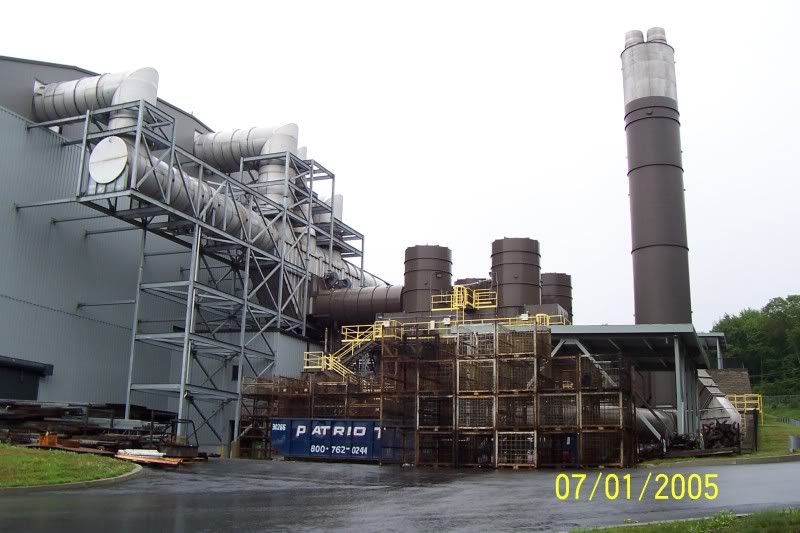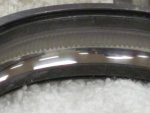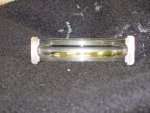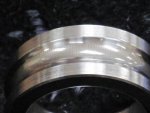The phenomenon is real, if you do a search on "bearing EDM damage"+ VFD you should find numerous papers on it, most of which are good for helping you fall asleep at night.
Reader's Digest version:
The fast rise time of the DC pulses that make up the PWM "pseudo AC" current going to the motor from the VFD, can under some circumstances cause a capacitive and/or inductive coupling effect between the stator and the rotor; the two separate elements can charge up like the plates of a capacitor. That means there is a voltage across them and that voltage charge, although in the millivolt range, can build up to the point where it exceeds the dielectric strength, or the insulating quality, of the lubricant film in the bearings. The voltage then flows from the rotor to the stator because the stator is grounded, passing through the bearings and races. At a microscopic level, that voltage is just like an EDM system (Electric Discharge Machining, hence the name of the phenomenon) and the tiny little discharges make a tiny little pit in the races, like a welder might. The bearings then roll over those pits, and they become an easier point to discharge next time. Repeat roughly 2.5 million times per day, the cumulative damage to the races starts to look like a washboard and the bearings become damaged as they fall into and out of those depressions. The worse it gets, the faster it happens, so critical failure is often rapid.
There are numerous things that cause and affect the severity of this, there are numerous things that can be done about it, all with good and bad points. One method is to use grounding shaft bushings on the motor, which gives the charge and EASIER path to ground than through the bearings (addressing the "how do the electrons know?" issue, search for "Aegis shaft grounding" for more info). But they become a wear part that has to be monitored and replaced periodically. Another method is to use non-conductive bearing races, i.e. the ceramic mentioned earlier, but that doesn't really address the problem, it addresses the symptom. I've also heard tell that the isolated bearing approach only works if designed into the motor in the beginning, that retrofitting them is not very effective. I couldn't tell you why, however it is becoming a common approach in "Inverter Duty" motor designs. A third approach is to eliminate the CAUSE of it in the first place, the steep wave fronts of the PWM pulses. DV/DT filters, or "Sine Wave" filters, between the VFD and the motor is one way to do that. You are adding inductance, which adds what is called the "Inductive Time Constant" to the change in voltage of those pulses, which reduces the capacitive effect at the motor end. Plus you are filtering out the peaks of any spikes that happen as a result of "standing waves", another issue that contributes not only to this, but also to motor winding insulation breakdown (typical of 380V and up drives). But DV/DT filters then can affect the motor circuit and the performance of critical Vector Control applications. Keeping the motor as close to the drive as possible also helps a little, but is not always practical. Using what is called "VFD cable", which is shielded and grounded at both ends, also seems to help some by reducing the capacitive coupling taking place in the motor cables that makes it worse. In places outside of North America where the use of this cable is more common or even mandated, they don't have this problem as much.
The best thing is not to assume any one solution is the cure-all because the problem is not always caused by the same thing, but rather to address which problem might be giving you the issue, then addressing THAT with one of these solutions. This presentation is one of the best and simplest to understand on the subject (the author happens to be a friend of mine). At the very end he is making a case for a little meter device he is selling, but the treatment of the causes and solutions is as good as any I have seen since he is not biased by wanting to sell one solution or another.
www.gke.org/.../files/EDM Physics and Reality 1.pdf?


